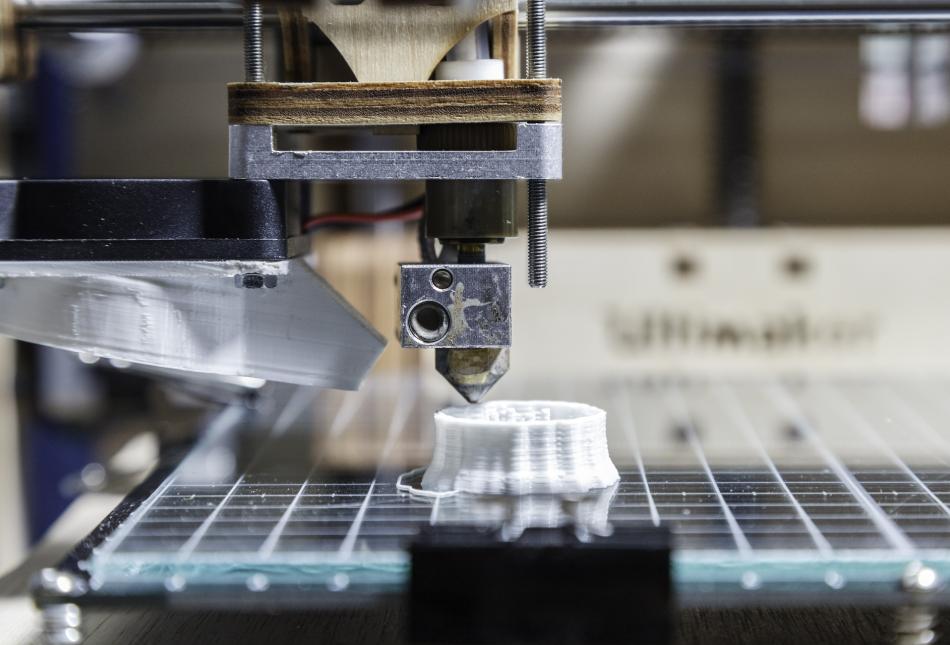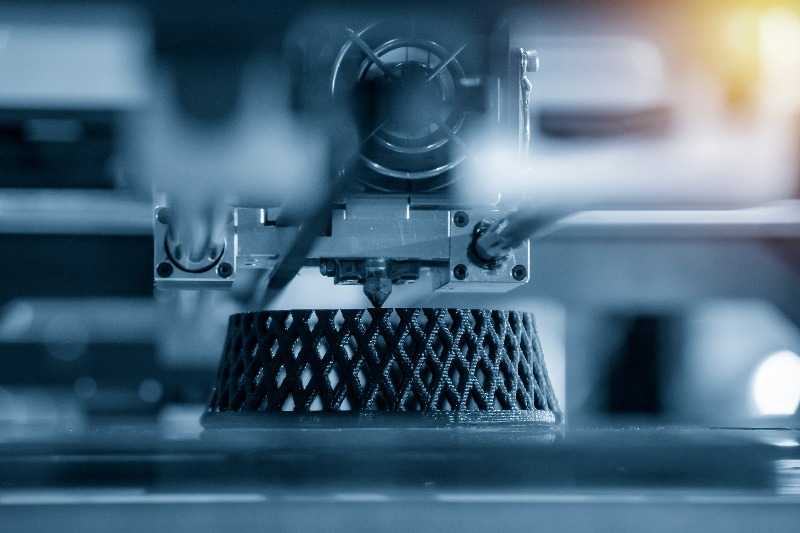
Over recent years, technology has seen much advancement across a number of industries – the world of design is no exception.
Without a doubt, the invention of 3D printing has changed the design world massively. A 3D printer is able to create real objects, in 3D, in real-time, based on what details it has from a digital design. This was revolutionary for the design world in so many ways.
Being asked to deliver on demand
3D printing allows us to print things in real-time, which means that items can be created much more quickly. Whatever part of the design industry you work in, this is likely to be something your clients are going to want more and more of.
Being able to offer on-demand products is a huge step forward for the world of design. It allows companies to offer a much speedier service, often cutting out parts of the supply chain to make product delivery a smoother process from start to finish.
Anthony Marsh, Senior Design Engineer at Portsmouth Aviation has worked for the company for over 30 years and is amazed at how fast technology has moved and progressed within the industry.
Creating working prototypes is easy
Gone are the days where creating prototypes would be a lengthy and expensive process. Thanks to 3D printers, you are able to make changes to your design via software on your computer. Previously, small changes would mean that you would need to start the production of your prototype again from scratch. Now you are able to print-on-demand any new prototype you have or any changes you have made. This means that you can easily compare side-by-side any number of prototypes, at various stages of their development, to assess the changes and what difference this will make to your finished design.
Senior Design Engineer Tony explains; “It used to take us a couple of weeks to get an item machined and then tested – if there was then a fault with the item it meant another couple of weeks to rectify. Now we are able to print an item within a day or two, making the process less time consuming.”
Testing products
Thanks to the ease of creating prototypes via 3D printing, it is easier than ever to test products for suitability across any number of factors. Whether this is visual, ergonomics and even material suitability. The cost-effectiveness of this means that you are also able to print any number of these to be used for things such as market research and product testing.
“The 3D printer has also been used for some fixtures within the Portsmouth Aviation factory, to prove a method, before committing to expensive tooling aids.”

Mass production has changed
By using 3D printing you are able to create individual bespoke, mass-produced items. This could be as diverse as a medical component with customer interfaces tailored to the individual patient’s body, or a car where seating, driver position and the ergonomic layout of controls are able to be individually tailored to each customer’s requirements, overlaid upon a mass produced component structure.
Remote working Is used more often
Due to the effects of the Covid-19 pandemic, remote working is now extremely common across all industries. With 3D printing, you are able to work with a team that is not in the same room as you. It is possible to send software designs to anyone, anywhere in the world for them to print out, check, use and redesign. Design teams are no longer required to be in the same room and so teams can work with talented individuals or companies across the world – not restricted by location which may have previously been the case.
Design has never been more efficient
Multiple team members can have their own version of the physical product printed in front of them, making the design more efficient than ever. They are able to implement their own changes and share these changes with other members of the team working on the project via the software on their computer. Should they wish to go ahead and print this out for their own use they are able to without any issue.
Future end users can benefit from being involved at a more tangible level in the design of their product for future use. It can also enable cost savings further down the line, after production where maintenance teams and specialists (both in house and external contractors) can understand the product and how it will affect their future maintenance and lifetime support.
A change in education
The design world is now being called upon to get involved in many more education materials than they once were. An estimated 77% of teachers say that they plan to use 3D printed materials in their classrooms sometime in the near future. There are many ways that 3D printing can be used in education, for example, the creation of real-life replicas like fossils and bones.
The world of medicine
Over the years, we have had some great results in the medical and healthcare industry. The recent Coronavirus pandemic shows us an example of how quickly the medical profession can act when given the right tools.
It is likely that designers will soon be called upon to help with these advances, with 3D printers being used to create items such as prosthetic parts and other medical tools to aid patients.
What does this mean for Portsmouth Aviation?
We have recently introduced a 3D printer to its list of tools, which has allowed our engineers to bring to life product designs much more quickly. 3D Printing has been a massive turning point for the design and manufacturing service and we are delighted to have these as part of our design procedure, helping to streamline the whole process.
Find out more about the services we offer and the work we do. If you’d like to learn more about our 3D Printer, please get in touch.